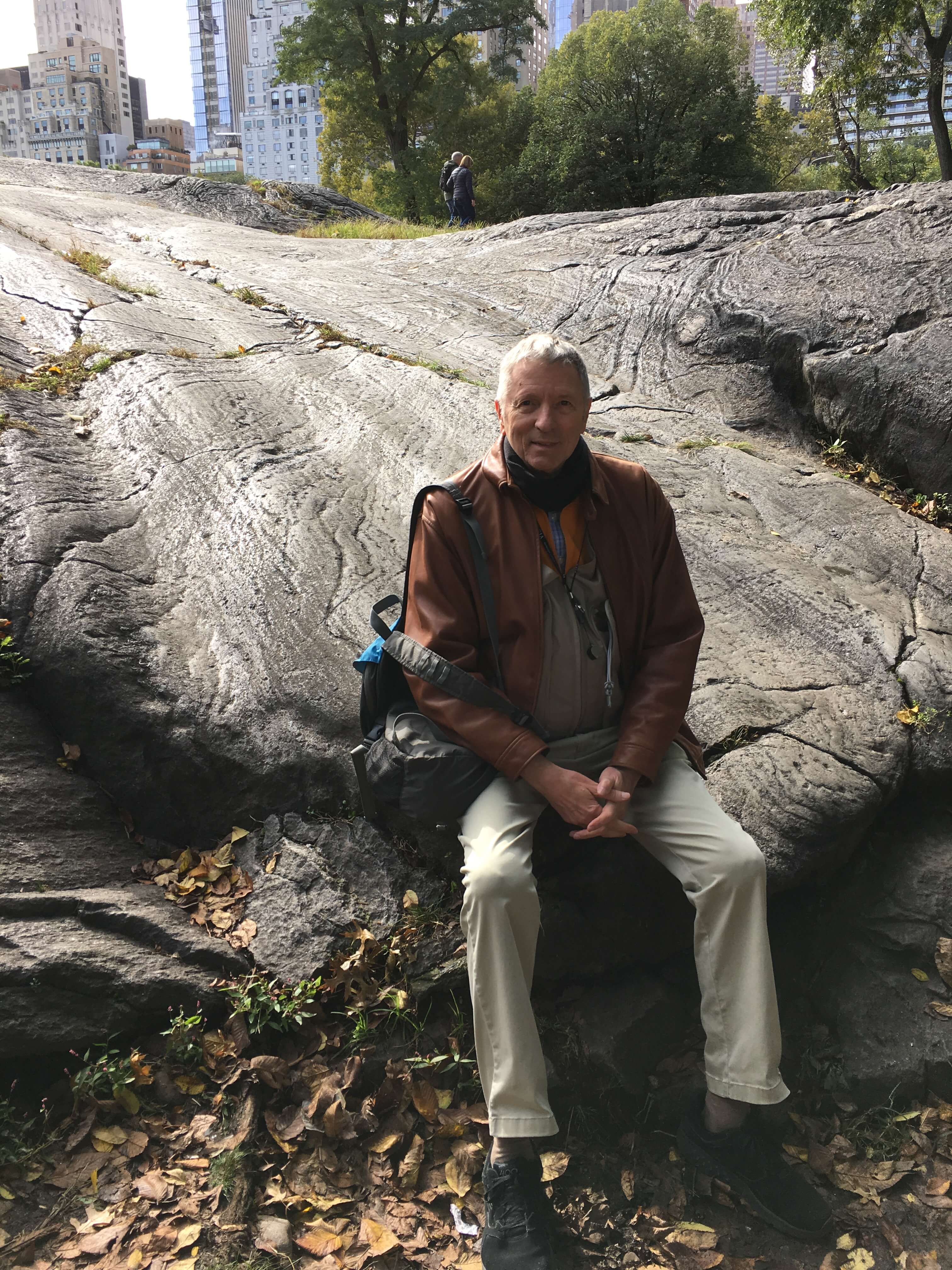
An Earth Scientist at Work
Taking the Classroom to the Outdoors

Since the biology and chemistry labs were both overflowing with students when I was scheduled to teach my paleobiology and natural history courses, I decided to use Central Park as an “outdoor” lab. A short <ten-minute walk from campus brought us to the park entrance at 59th street and Central Park West.
We arrived at Stop #1, a large mass of rock that crops out not far from the park entrance. The students’ first assignment was to make a field sketch of the outcrop that included identification of the kind of rock under observation (i.e. Manhattan Schist). The schist makes up the bedrock of Manhattan. Students were presented with a field problem: reconstruct the rock strata in the subsurface based on measurements taken with a Brunton compass. This specialized compass measures the degree the strata trend away from north and the angle at which they dip into the earth (range from zero degrees [=horizontal] to ninety degrees [=vertical]). After the data were recorded and verified, we continued the fieldtrip.
Around the corner we came to Stop #2, a large, very smooth, polished outcrop of the same rock. Field problem: come up with multiple working hypotheses to explain how the rock became so shiny. Students walked around and touched the outcrop, measured the angles, discussed the problem amongst themselves and finally presented their ideas. Answers ranged from a volcanic origin to rain and snow to kids sliding down the rock and polishing it. However, during this lab not one student figured out that a glacier moved across the park from the north and polished the outcrop. We discussed the origin and timing of the glacier (retreated about 15 thousand years ago) and I pointed out to those who believed the glacier came from the south that it probably did not originate in Miami. We then searched for other evidence of glaciation and found glacial striations (scratches and grooves) carved into other outcrops, all trending in an approximately north-south direction.
All of this was accomplished during one class session.
Back to school…

